Welcome, pet parents, to our cozy corner of the internet where we discuss all things furry, cuddly, and safe! Today, we're tackling a topic that's close to every pet owner's heart: keeping our beloved companions out of harm's way. Specifically, we're diving into the curious case of pets and kitchen safety. So grab a cup of tea, snuggle up with your furry friend, and let's embark on this paw-some journey together!
Ah, the kitchen – the heart of the home, the place where delicious aromas waft through the air and culinary masterpieces come to life. But for our four-legged friends, it can also be a perilous playground filled with potential hazards.
Just imagine while you're whipping up a gourmet meal, lost in the rhythm of chopping, sautéing, and simmering, you suddenly hear a strange noise. It’s a choking sound coming from behind you. You spin around to find your furry friend with their head stuck in the cookie jar, gasping for air. Panic sets in as you rush to their rescue, but fear not – with a few simple precautions, we can ensure that our pets stay safe in the kitchen.
Let's face it – our pets are curious creatures with insatiable appetites. Whether it's the tantalizing aroma of freshly baked cookies or the irresistible scent of sizzling bacon, our furry friends are drawn to the kitchen like moths to a flame. But while it's tempting to share our culinary delights with them, it's important to exercise great caution.
Avoid leaving food unattended on countertops or tables where your pet can easily reach it. Invest in pet-proof containers for storing snacks and treats, and be mindful of ingredients that could be harmful to your furry friend, such as chocolate, grapes, and onions.
Cooking can be a chaotic affair, with pots bubbling, pans sizzling, and ingredients flying every which way. Amid all this commotion, it's easy for our pets to get underfoot – with potentially disastrous consequences.
To keep your furry friend safe, designate a pet-free zone in the kitchen where they can't wander into harm's way. Consider installing baby gates or barriers to prevent access to hazardous areas, and always keep pot handles turned away from the edge of the stove to avoid accidental spills.
From stray crumbs to slippery spills, the kitchen floor can be a minefield of hazards for our four-legged friends. One wrong step could result in a slip, trip, or fall – not to mention the risk of ingesting something harmful.
Make it a habit to clean up spills and crumbs promptly, and consider investing in a pet-friendly vacuum cleaner to keep your floors clean and debris-free. Keep trash cans securely lidded to prevent scavenging, and be mindful of potential choking hazards such as bones, pits, and plastic packaging.
In the grand tapestry of life, our pets are the beloved companions who weave joy, laughter, and unconditional love into our everyday existence. As pet parents, it's our responsibility to ensure their safety and well-being – especially in the heart of the home, where culinary adventures abound.
By taking a few simple precautions and keeping a watchful eye on our furry friends, we can create a safe and nurturing environment where they can thrive. So the next time you find yourself cooking up a storm in the kitchen, take a moment to pause, look around, and make sure your beloved companion isn't choking by the stove. After all, a little extra vigilance today could mean a lifetime of happiness and health for your furry friend tomorrow. Happy cooking – and pet parenting!
Embarking on the delightful journey of pet ownership is a decision filled with joy, companionship, and a touch of mischief. Choosing the right pet that aligns with your lifestyle and preferences is crucial. Today we'll explore the charm of the 7 most popular pets that have found their way into the hearts of people around the world. From the feathered to the furry, these delightful companions bring love and warmth to any home.
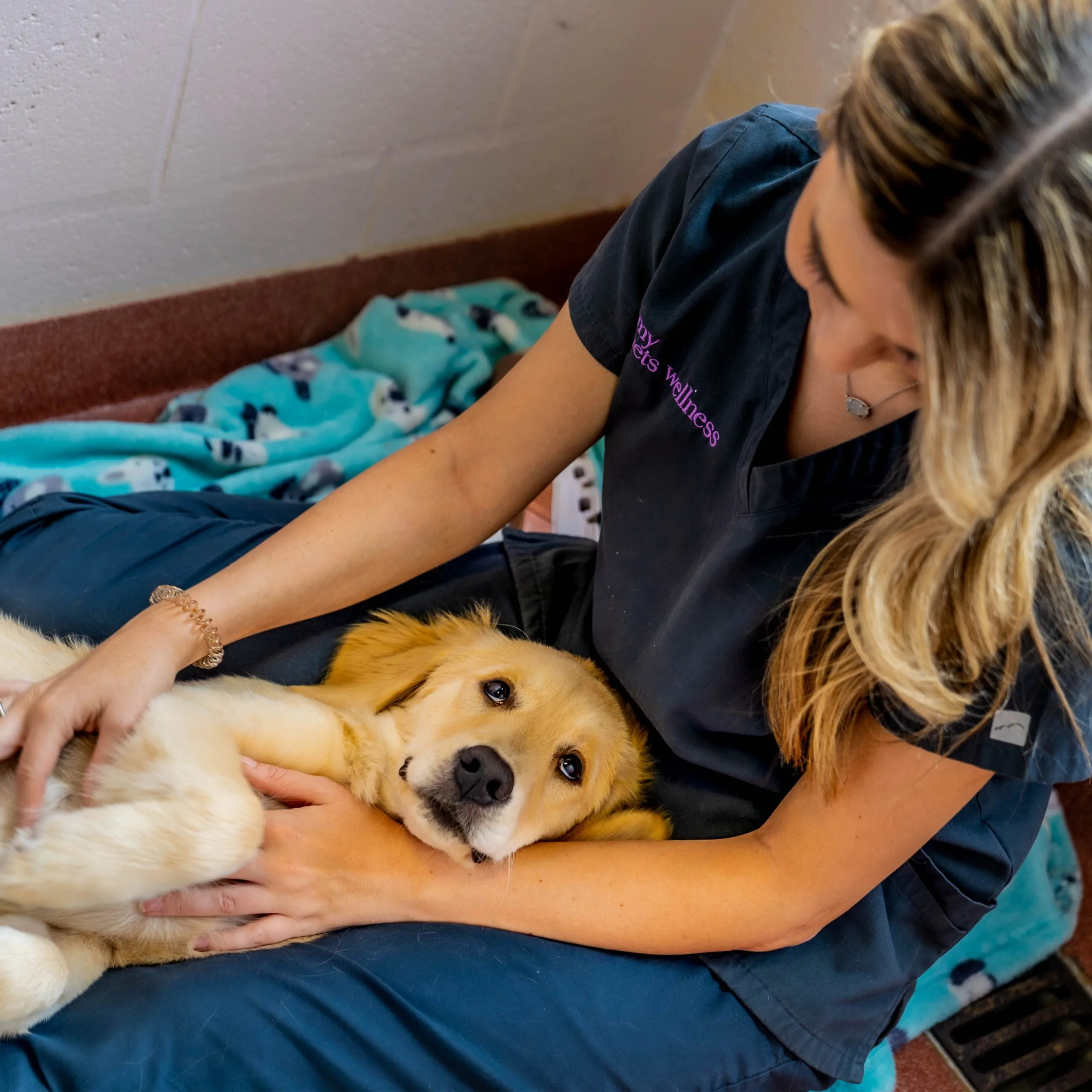
Known as man's best friend, dogs top the list of the most popular pets. With their boundless energy, loyalty, and diverse breeds to choose from, dogs cater to a wide range of lifestyles. Whether you prefer the playful antics of a Labrador Retriever or the regal demeanor of a Shih Tzu, there's a canine companion for everyone.
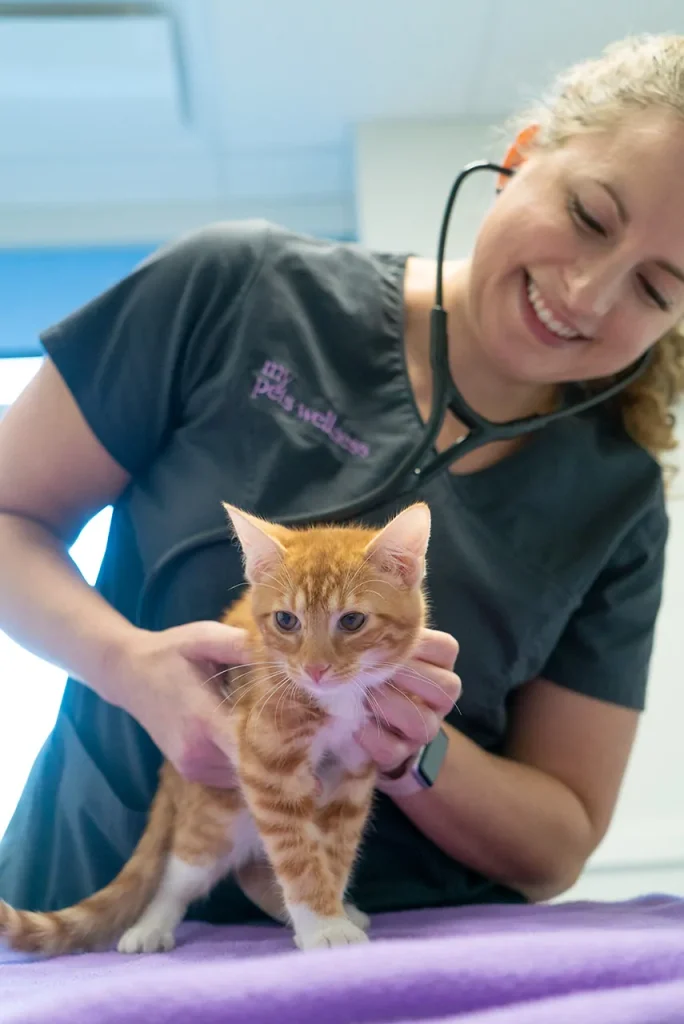
Cats, the epitome of grace and independence, have secured their place as one of the most beloved pets globally. From the aloof charm of a Persian to the adventurous spirit of a Maine Coon, these feline friends bring a sense of calm and companionship to any household. Their playful antics and soothing purrs make them an irresistible choice.
For those who appreciate the serene beauty of an underwater world, fish make for captivating companions. With a vast array of species and vibrant colors, setting up an aquarium can be an enchanting experience. From the graceful Betta fish to the mesmerizing patterns of a Discus, fish offer a tranquil and visually stunning addition to your living space.
Feathered friends add a touch of melody and color to any home. From the chatty parakeets to the majestic cockatoos, birds bring a unique charm with their vibrant plumage and melodious tunes. Their social nature and ability to mimic sounds create an engaging and entertaining atmosphere.
For those with a penchant for small, furry creatures, hamsters are a popular choice. These pint-sized rodents are known for their adorable antics and low maintenance. With their endearing habit of stuffing their cheeks with food and their tiny, quick movements on a hamster wheel, these pocket-sized pets are a joy to watch.
Rabbits hop into the hearts of pet lovers with their gentle nature and soft, fluffy fur. These social animals thrive on companionship and can form strong bonds with their owners. Whether they're munching on leafy greens or showcasing their impressive agility in a bunny hop, rabbits add a delightful charm to any home.
Cute and sociable, guinea pigs are excellent companions for families and individuals alike. With their gentle demeanor and distinctive squeaks, these small rodents create a warm and fuzzy atmosphere. Their love for munching on hay and cozying up in their habitat makes them a popular choice for those seeking an affectionate and manageable pet.
Choosing a pet is a personal journey, and the options are as diverse as the personalities of the pets themselves. Whether you're drawn to the playful energy of dogs, the mysterious grace of cats, or the enchanting underwater world of fish, each pet brings its own unique magic to your life.
Consider your lifestyle, preferences, and the kind of companionship you seek, and you'll find the perfect pet to share your home and heart with. The world of pet ownership awaits, filled with love, laughter, and adorable moments that make life infinitely richer.
Sometimes, our dogs do weird things. Like biting their dirty paws or rolling around in puddles. Dogs might even drink from toilets or lick their butts. In some cases, your pup might eat their own poop, or even worse, the poop of another dog or animal. For any pet owner, that's pretty gross and can be a cause for concern.
But why do dogs eat poop? Well, there are a bunch of reasons. Even though it might seem nasty to us humans, your dog's reasons for doing it might really surprise you.
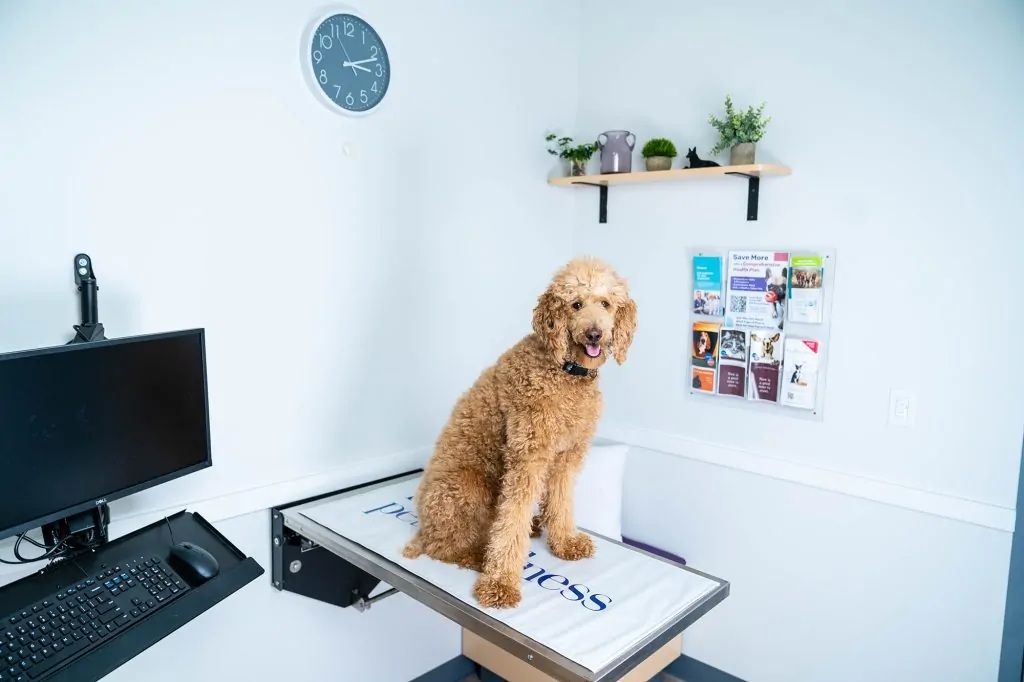
You should be concerned if your dog eats poop. While it's a relatively common behavior in dogs, known as coprophagy, it can be indicative of various issues that warrant attention. Here are some reasons to be concerned:
There is a risk that your dog can get sick from eating poop. Consuming feces exposes your dog to potential health hazards, including:
To minimize the risk of your dog getting sick from eating poop:
If you observe your dog consistently engaging in poop-eating behavior, you should consult your local veterinarian. They can help determine the underlying cause and provide guidance on how to address the issue, whether it be through dietary changes, behavioral training, or medical intervention.
Everyone loves a great trip. Vacations, getaways, and family holidays are a fun way to break up the monotony of everyday schedules, but they aren’t always as much fun for your pet. Not all pets travel well and they may not even be welcome where you are going.
Not only is travel itself sometimes difficult, but many pets aren’t happy in an unusual location, with strangers, or being left alone for long periods in a place away from home. When you take a dog on a trip with you they may have negative reactions, such as:
Some dogs make great traveling partners. However, if your pet can’t or doesn’t want to go on a trip, you should consider placing them in your local boarding kennel while you are away.
Boarding kennels are a great option because they:
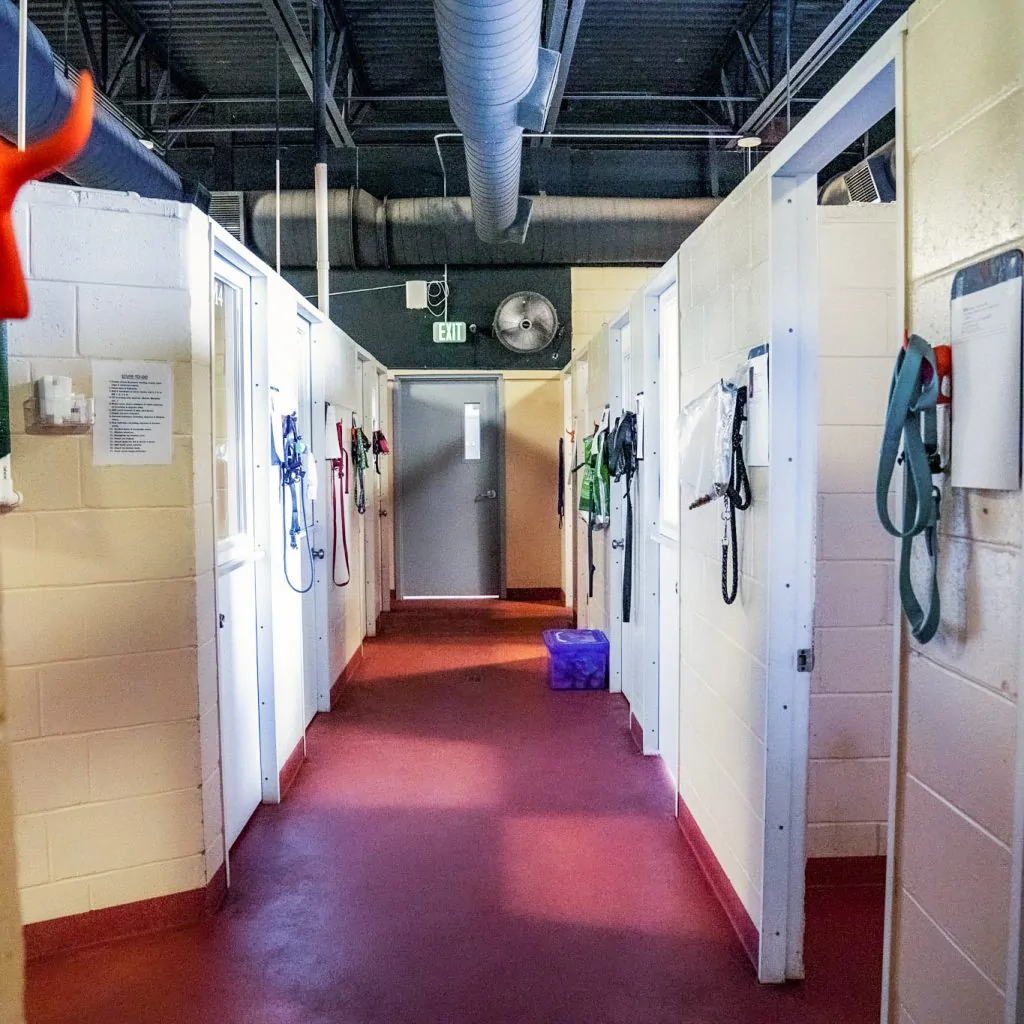
You might feel a little of your own anxiety about leaving your fur baby at a boarding kennel for the first time. That is a perfectly normal feeling and easy to mitigate by making sure that you choose a great boarding kennel where your dog will be happy.
Here are a few tips for finding the best boarding kennel for your dog.
1.Ask for Recommendations
Word of mouth and recommendations from family and friends is often the best and easiest way to find a new service provider of any kind. This is especially true in this case. You will feel better leaving your pet somewhere you know has done a good job with the pets of others in the past.
2. Don’t Make Price the Main Factor
You will spend much more time worried about your pet if you choose a boarding kennel based solely on its having a cheap price. While it is okay to use price as a factor to measure one place against another, do your due diligence in checking a place out first. There may be a reason why it is so cheap (such as playtime being considered an extra amenity, billed separately).
3. Visit the Boarding Kennel Before You Decide.
Things might look great on paper (or online), but the reality might be different. Check out any facility before you decide to leave your dog there. If you will be away for an extended trip, it can be a good idea for the dog to spend a night at the kennel as a trial before you leave them there for the duration of your trip.
4. Look For a Boarding Kennel with Live Feed.
Not all boarding kennels have live feeds, but it is a fantastic feature. Being able to look in on your dog at any time will give you a better sense of security. It also ensures that your pet is being cared for to the exact standards that you agreed to when you left them in the kennel’s care.
Boarding kennels can be a great option for busy pet parents or during a trip. If you decide a kennel is a good option for your dog, make sure to visit your local veterinarian to ensure your dog is healthy and properly vaccinated for their stay. Your vet may also have good recommendations for finding a boarding kennel near you.
Have you noticed that your dog eats grass and wondered just how normal it is? The answer to this question is a little more nuanced than just saying yes it is normal or no it is not. However, for most pet parents, there is nothing to worry about.
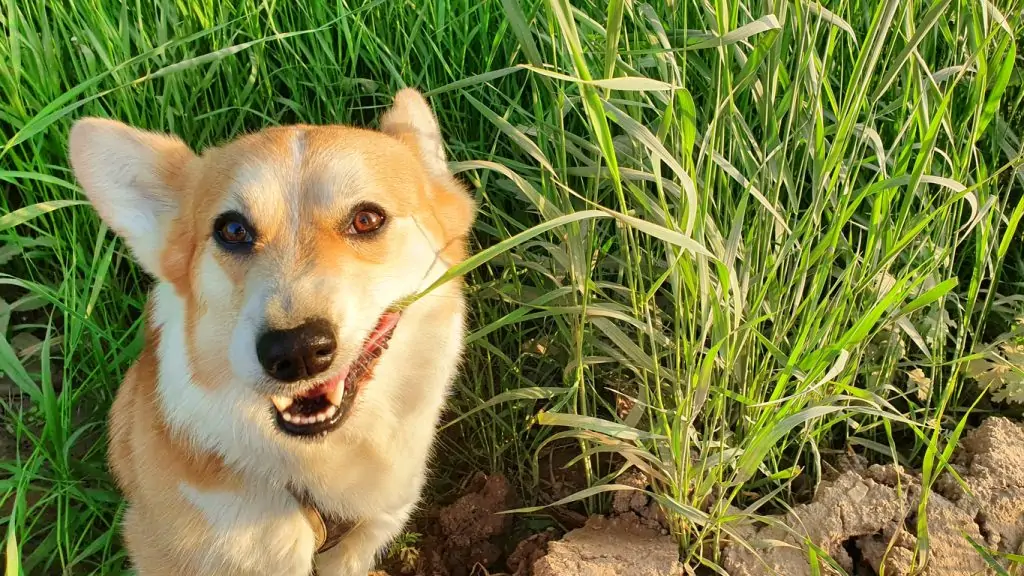
If you have always known your dog to eat grass every day when they go out or they normally graze like a cow, they are probably bored or just like grass. However, if your dog is eating grass and not food, or they have started eating grass all of a sudden, there is likely a reason for it.
A lot of dogs eat grass because they enjoy eating grass. They simply like the fresh greenery outside and enjoy how it tastes. However, for some dogs, it could be an indicator of an upset stomach a lack of fiber, or another type of dietary deficiency.
Here are some common questions that dog owners ask about their pets eating grass.
Should I let my dog eat grass when they’re sick?
Eating grass can cause vomiting for some dogs. In many cases, a dog will eat grass instinctively to soothe an upset stomach. This is not generally considered harmful.
How long after eating grass will a dog vomit?
Only about a quarter of all dogs vomit after eating grass. Most of the time it is caused by them gagging on the long strands of grass, so the incidence occurs immediately.
Why is my dog eating grass and throwing up?
If your dog is eating grass and throwing up it is a likely indication of a stomach problem and you should consult your local veterinarian.
Why is my dog eating grass and having diarrhea?
If your dog is eating grass and having diarrhea it is a likely indication of a stomach problem and you should consult your local veterinarian.
Should I stop my dog from eating grass?
There is no need to stop your otherwise healthy dog from eating grass. However, you should stop your dog from eating any grass that has been treated with a fertilizer, pesticide or other chemical as these types of chemicals are generally poisonous to dogs.
Is there a good substitute for a dog eating grass?
If you are concerned about toxins or just prefer that your dog not eat grass there are substitutes on the market ranging from specialty grasses to expensive herbal substitutes. Many pet owners opt to feed their dogs other vegetables instead, such as lettuce, celery, and even carrots.
It can be okay for dogs to eat grass, but only if you are sure that it is not due to underlying gastrointestinal issues. If you find that your dog is eating grass, it is best to consult your local veterinarian and discuss your dog's bowel habits, dietary indiscretions, and food and treats.
As your companion pet ages, they face increased health concerns just like their human companions do. You may watch your senior pet and worry that they might be aging and losing some of their cognitive abilities. Sight, hearing, and blood sugar have all become common concerns.
Across the country, local veterinarians are hearing more and more people ask if their pet can get dementia.
Just like humans, dogs and cats can develop dementia as they age. Veterinarians call this Cognitive Dysfunction Syndrome.

It is a disease that is comparable to Alzheimer's in humans. The disease begins to onset as a dog ages. “CDS” is a neurological degenerative disorder of senior dogs and cats characterized by gradual cognitive decline. Cognitive Dysfunction Syndrome is the official name for what we might commonly call “doggy/kitty dementia”.
The exact age at which any dog might start to experience symptoms of dementia varies. Studies have shown that cognitive decline can start as early as 10 years of age in cats and dogs.
To rule out other causes of your pet's symptoms, the veterinarian may use additional tools such as blood and urine tests.
Some of the first signs of dementia that many people notice are their pets staring at walls or looking off into space. Other common signs people tend to notice are not knowing their owners are in the same room or pacing around a lot with no sense of direction or reason.
In addition to disorientation, confusion, and increased anxiety, pets dealing with this form of dementia may no longer respond to their name, stop playing, and become more irritable.
(Other symptoms includeà Waking up in the night; increased daytime sleeping, Inactivity
Increased vocalization, often at night) inappropriate urination or defecation in the house, lethargy, decreased interest in play or other activities, decreased responsiveness to the owner and other pets, and abnormal sleep patterns).
Most of the time they live for about two years after diagnosis when they have dementia, sometimes longer. Much like with humans, when a dog or cat is diagnosed with dementia, quality of life should take the focus over quantity of years. Work with your family’s veterinarian to ensure your pet is as content and comfortable as possible.
Work with your veterinarian to find the right supplements and medications to support your dog’s health. Provide your dog with a safe but stimulating environment and keep them on a regular routine. These things will best help them cope with developing dementia.
As with many diseases found in both humans and animals, there is no guarantee for avoiding some diseases. When it comes to dementia in dogs and cats there are genetics and some environmental factors that can’t be controlled.
However, there are many things that you can do to help your pet have a better chance of living a longer, healthier, and happier life. Quality food and clean drinking water are an absolute must for a healthy dog. So is lots of exercise and mental stimulation.
One of the best things you can do for yourself, and your pet is to exercise and play with them. It will help you both have a better, longer life.
If you notice your pet behaving differently or in a way you do not understand, do not hesitate to contact your local veterinarian. Catching problems early gives your pet a better chance to overcome them.
If you're on the hunt for ways to make this weekend extra special for you and your beloved furry companion, you've come to the right place. We've rounded up the top ten activities that promise wagging tails, happy purrs, and a truckload of memorable moments. From leisurely walks in the autumn breeze to movie marathons and even a splash in the water, we've got the perfect plans for an unforgettable weekend with your pet. Let's dive into a weekend full of tail-wagging adventures and cozy cuddles!
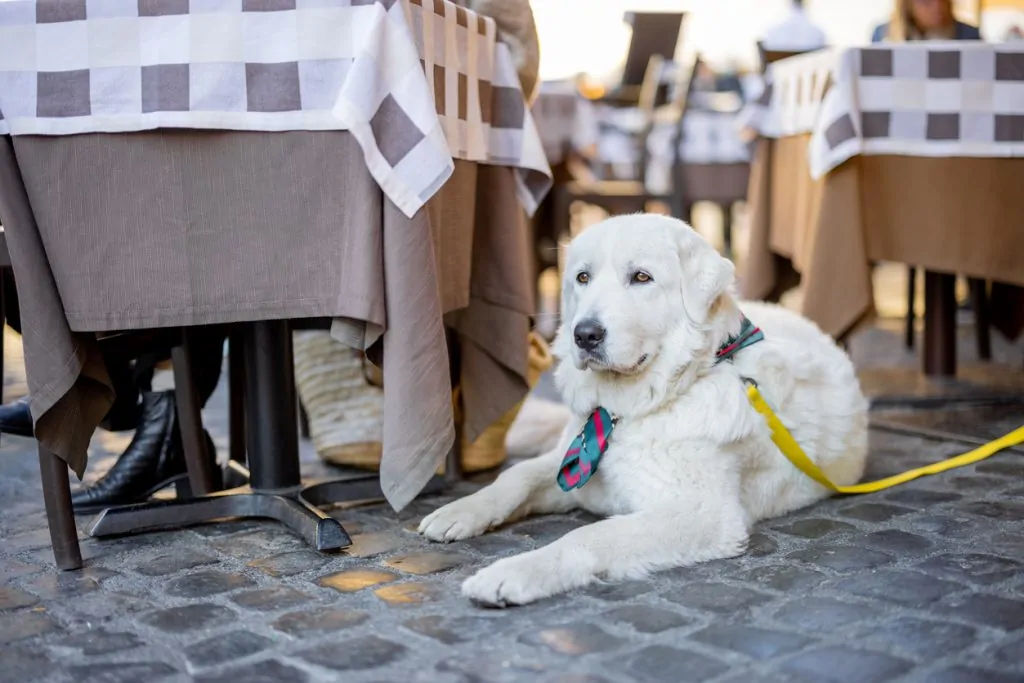
Going for a walk with your pet is a fantastic idea for bonding and benefits both your and their health. It's a great opportunity to enjoy the crisp fall air at a nearby park, offering your furry friend a change of scenery and stimulating sensory experiences. Whether it's a tranquil nature trail or a bustling urban path, a walk will invigorate both you and your pet, promoting exercise, mental well-being, and a stronger pet-owner connection.
Watching a movie or TV show with your pet this weekend is a delightful plan to unwind and share quality time together. Cozy up at home with your fur baby provides a relaxing ambiance and the perfect excuse for cuddles. Choose a pet-friendly space, like your living room or a designated pet area, so your pet will be comfortable. The screen time will offer entertainment and companionship, making for a splendid bonding experience.
Embarking on a dinner outing with your pet is an excellent way to treat both yourself and your furry friend. Make the experience special by choosing a pet-friendly restaurant mentioned in our articles highlighting the best dog-friendly dining spots. These establishments provide a welcoming atmosphere for dogs, enabling you to enjoy a delightful meal while your pet basks in the outdoor or designated pet-friendly areas. It's a win-win for bonding and savoring good food with your beloved pet by your side.
Opting for a home spa day with your pet this weekend is a superb way to unwind and pamper both yourself and your pet. Transform your living space into a relaxing sanctuary, complete with soothing scents and calming music. Treat your pet to a gentle massage or a bubble bath in the comfort of your home. This bonding experience allows for a peaceful escape from the everyday routine and fosters a stronger connection with your cherished pet.
Indulging in special snacks with your pet this weekend is a delightful way to celebrate the joy they bring to your life. Set up a cozy snacking spot at home or visit a pet-friendly café or park where you can both relish tasty treats. These moments create a sense of shared enjoyment and strengthen the bond between you and your furry friend, making for a memorable weekend filled with love and delectable moments.
Taking a day trip with your pet is a refreshing escape and enriching adventure. Head to a pet-friendly destination, perhaps a nearby pet-friendly beach, hiking trail, or a dog-friendly park. The change of scenery and engaging activities will invigorate your pet while creating lasting memories. It's an opportunity to strengthen the pet-owner bond and provide your furry friend with a day of exploration and joy in the great outdoors.
Visiting sick or elderly friends with your pet is a heartwarming gesture that brings comfort and joy. Pets have a unique ability to lift spirits and provide companionship, especially to those facing health challenges or loneliness. The presence of a furry friend can bring smiles, reduce stress, and foster a sense of connection. Sharing this positive experience with loved ones can brighten their day, bringing a sense of warmth and companionship during difficult times.
Taking a dip with your pet promotes both fitness and fun. Swimming is a fantastic exercise for pets, especially during warmer days, aiding in joint health and muscle strength. It's an enjoyable way to beat the heat while creating cherished memories with your furry companion. Choose a pet-friendly swimming location, such as a dog-friendly beach or a designated pet pool, ensuring a safe and enjoyable aquatic adventure for both of you.
Organizing a play date for your pet this weekend is a fantastic way to stimulate their social interactions and mental well-being. Pets, like humans, thrive on companionship and play. Setting up a play date allows your fur baby to engage with others of their kind, promoting exercise, socialization, and joy. It's an opportunity for your pet to burn off energy, make new friends, and strengthen their social skills, all while you enjoy watching their playful antics.
Reading to your pet is a heartwarming way to unwind and nurture a stronger bond. Pets enjoy the sound of their owner's voice, and this shared activity creates a sense of comfort and familiarity. It's calming for both you and your pet, providing a moment of tranquility and mental stimulation. Plus, it's a great excuse to cuddle up and escape into a captivating story while enjoying the peaceful presence of your beloved pet.
Embrace the joy of spending quality time with your pet this weekend. Whether it's a simple stroll, a cozy movie night, or a playful swim, these activities will deepen your bond and create precious memories. Cherish the laughter, the companionship, and the love you share.
Everyone thinks that their pet is the most special pet in the world- and while Ricky might do the funniest dance and Fluffy has the sweetest little mew that you have ever heard- having a pet actually makes you part of one of the largest clubs in America!
According to Forbes, two-thirds of households in the United States have pets. So, which kind of pet is most popular? Read on to find out!
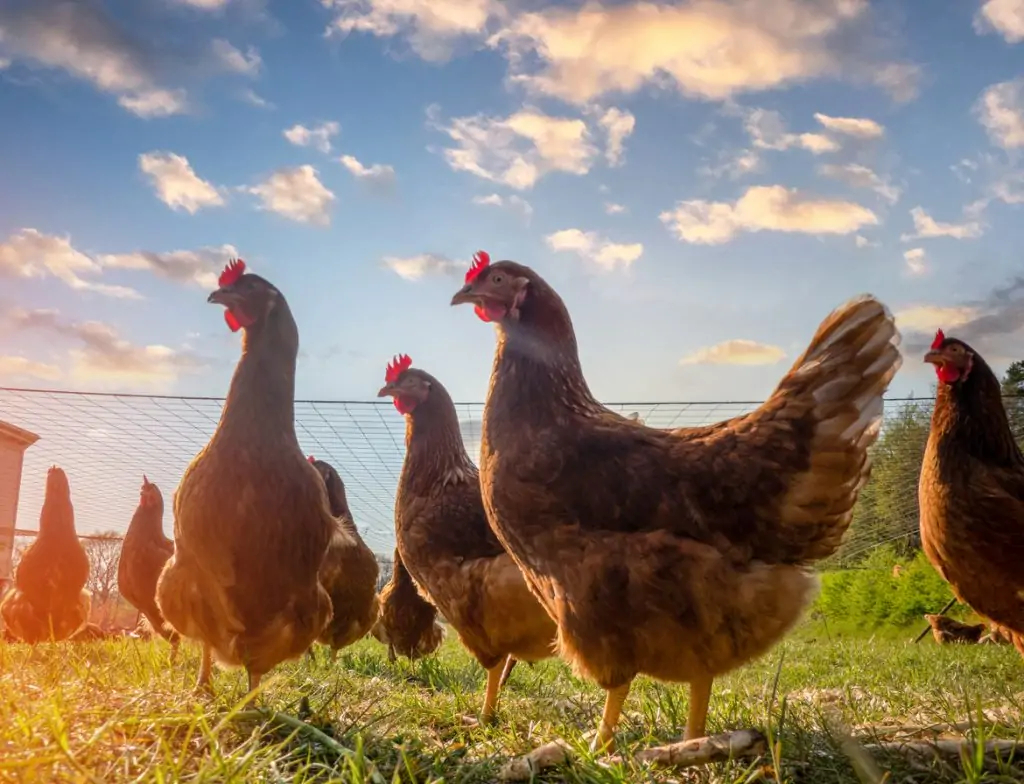
In a country with 86.9 million homes that have pets, there are some pretty unique choices out there. Of course, the majority of people have pets of the four-legged, furry variety, but there are also some popular pets out there that might surprise you. Let’s take a look at the most popular kind of pets to have in the United States.
We’re already surprising you, aren’t we? That is, unless you are one of the many households who have chickens, ducks, or other poultry running around your yard!
Because poultry are often considered farm animals, it is hard to come up with an exact number that are kept as pets. However, statistics do show that many more households are opting for poultry as pets, possibly because of their dual purpose as egg producers and companions.
Somewhere between three and seven million people are the proud owners of pet rabbits. It is no doubt due to their cute fluffiness that so many people are attracted to the idea of having them as pets.
It is important to keep in mind that rabbits can be difficult to care for. Like most pets, they have special needs in terms of housing and food that must be met to keep them healthy and active.
When we start talking about reptiles as pets, people often think of snakes. While snakes are a popular choice, the most popular choice is the Bearded Dragon. The exotic beauty of reptiles likely adds to their popularity.
In addition to the Bearded Dragon, Leopard Geckos and Ball Pythons are popular as pets among reptile lovers.
The most popular type of pet bird is a Parakeet, and they are kept as companions by people all over the world. In the United States, more than 20 million people have pet birds. Some breeds are known for their ease of care, while others can be quite difficult to maintain.
The most popular kinds of birds to have as pets are Cockatiels, Parakeets, Parrots, Cockatoos, and Macaws.
Having an aquarium is fun and exciting and the best part is that it is often a great choice as an additional type of pet to add to your home. Eight million people have freshwater fish tanks in the United States, while nearly seven million more have outdoor ponds, and an additional 700,000 keep saltwater tanks.
The most common fish that we find in aquariums are Guppies, Goldfish, Suckermouth Catfish, Zebrafish, and Oscars.
While cats may be number two in popularity, no cat comes in second in their pet parent’s heart. Cat lovers develop close bonds with their feline family members and usually have a kindred spirit when they run into one of the other 58,385,725 “cat people” out there.
Most domesticated cats in the US fall under the umbrella of American shorthair in terms of breed. However, three to five percent of cats come from breeders and are considered purebred. According to Forbes, the most popular cat breed in America is the Ragdoll.
We can finally settle that long-standing debate between cats and dogs. Dogs are man’s best friend and the most popular type of pet to have in the United States. There are 76,811,305 pet dogs in American homes.
Dogs come in all kinds of shapes and sizes and have a wide variety of personality types. Dogs make great pets when you find the right fit for your home. The most common dog breeds in the United States are the Boston Terrier, German Shepherd, Labrador Retriever, Golden Retriever, and Poodle.
You just got a brand-new puppy. You have thought of everything: bedding, bowls, collar, leash, and more. But, what about a name? You have to have something to name your new best friend, but where to even start…
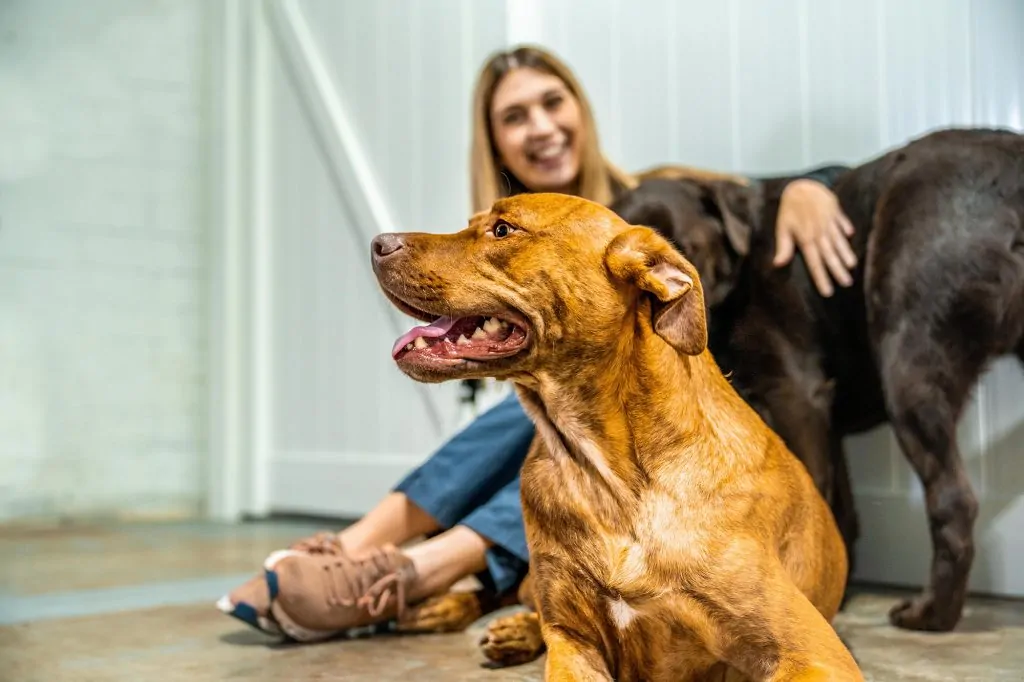
Before you delve into lists of puppy names and start trying to pick one, there are some things that you should consider. Here are a few simple tips for picking a name:
Sometimes, the best funny names for puppies are situational. We’ve heard of a few Bluetick Coonhounds named Red. Occasionally where or how you found your new friend will inspire a great funny name. However, if you are lacking any obvious names, here is a list of 25 funny puppy names that will put a smile on your face!
As stated above, it’s very difficult to change a dog’s name after they have learned it, so choose wisely. While you might get a kick out of some of the names on the list, do be sure the name you choose fits your dog and is one you are comfortable using for years to come.
Of course, no matter what you name your dog making sure that they are healthy and well cared for should be your top priority. If you have any questions or concerns about how to care for your dog, make sure that you check with your local veterinarian.
You have probably heard that old saying that there is never too much of a good thing, but that isn’t entirely true, at least, not all of the time. There does come a time when you could have too many dogs in one household. The real question here is, how many dogs are too many for one house? Today we will talk about the right answer to that question.
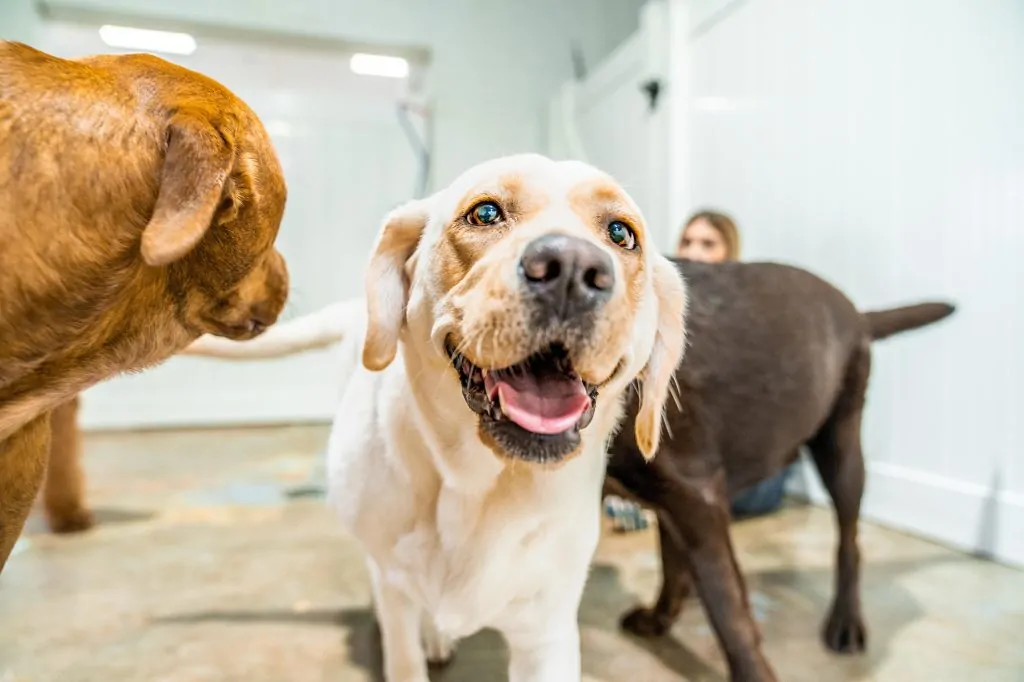
The answer to how many dogs is too many likely depends on your family and your home. If you want to get a dog or multiple dogs, you will need to have room for them (common advice dictates that you should only have one pet per room, regardless of the type of pet), if you have the time to care for them properly and you can afford to provide for them adequately. Of course, this basic answer doesn’t exactly answer the question, but it is a good place to start.
The truth is, you probably aren’t reading this article before you get your first dog and it likely didn’t appeal to you because you were introducing a second dog into the family. Odds are, you were really wondering about getting a third, fourth, or even fifth dog.
The simple answer is that having three dogs is not too much, as an arbitrary rule. Many families choose to have three dogs and are quite happy. For lots of homes, the answer is, “The more the merrier!”
The thing about dogs is that they are very social animals that thrive living in packs. In most cases, your dogs will be happy to have a new family member to play with. The bigger question is do you have the time and money necessary to care for an additional pet?
Pet care, especially for some dog breeds can be very expensive. There is more than just food and water. Consider the age of your existing pets and the potential for veterinarian bills as the pet's age. Many people find it can be financially advantageous to stagger the ages of your dogs. This may also help as younger dogs keep the older ones more active and older dogs will teach the younger dogs better behavior (hopefully).
There is no set number of dogs that makes you instantaneously become a hoarder. Hoarding is defined by care and conditions. If you have multiple dogs and can not care for them properly or keep them in inhumane conditions, then you are hoarding. 10 dogs is not considered hoarding as long as they are provided for, in good condition and all have enough room to play and stay healthy.
If you want another dog and you can care for them and have time for them, then you should absolutely get another dog. Keep in mind that the health of your dogs as well as a new dog must be a top priority.
Make sure you take any new family members to the vet right away to be sure they do not pose a risk to your other pets. If you have any problems around introducing your new family member, such as behavioral issues, consult your local veterinarian for help.
Phone: (855) 461-8259
Email: [email protected]